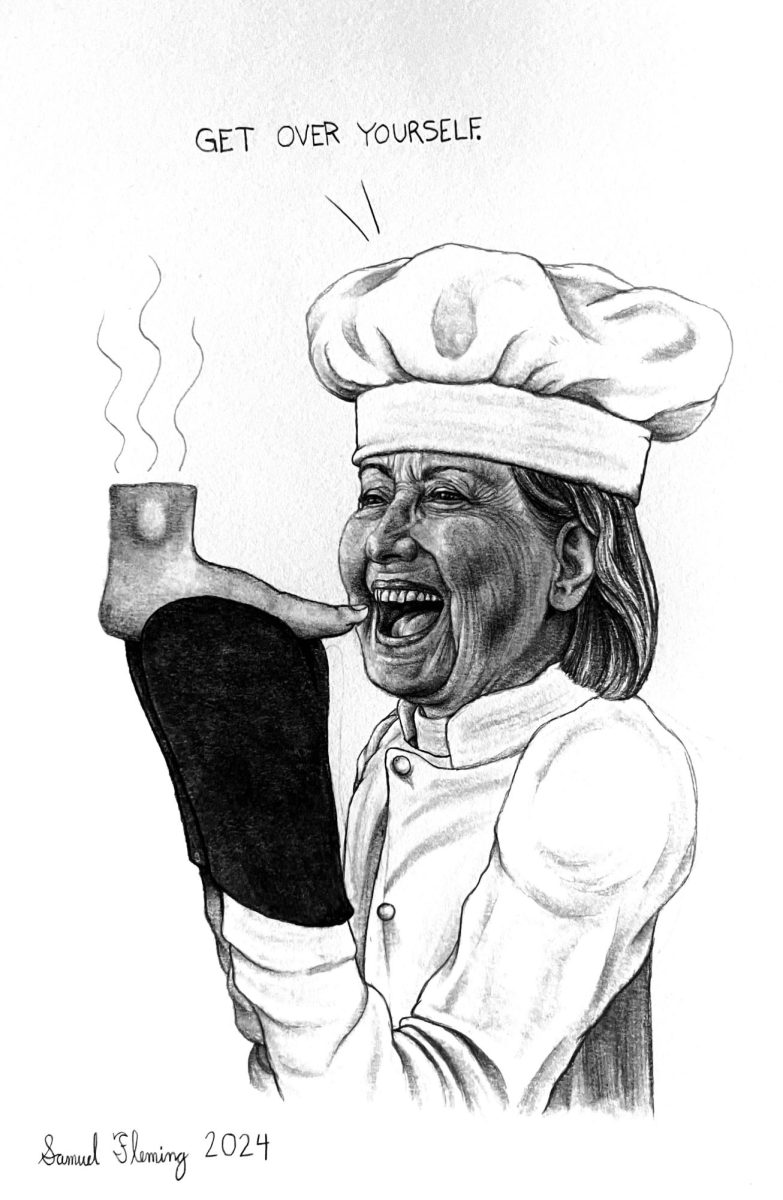In arriving at its recommendation that Nicholson Hall be stripped of its name, the U’s task force on building names “task force report” relied heavily on a 43-year old article titled “Political Antisemitism in Minnesota During the Great Depression” by the late Hyman Berman, who had been an eminent University of Minnesota history professor. “Political Antisemitism” examined the role that anti-Semitism played in Minnesota’s 1938 gubernatorial election campaign in which the Farmer-Labor incumbent, Elmer Benson, was defeated by Harold Stassen, a Republican.
The main protagonist in Berman’s account was a colorful and outspoken Republican politician and anti-communist, Ray P. Chase, whom Berman accuses of having used implicit anti-Semitic tropes in an eve-of-election pamphlet, “Are They Communists or Catspaws: A Red-Baiting Pamphlet.”
But our interest here is a less prominent figure. It is the University’s dean of student affairs from 1917 until his retirement in 1941, Edward E. Nicholson, “affectionately” known on campus, at least to some, as “Dean Nick,” according to the task force report. Abruptly, halfway through “Political Antisemitism,” Berman makes the following lurid revelations about Nicholson (these are direct quotations):
- “[Chase] received voluminous reports on “Jew Reds” on the University of Minnesota campus from Dean of Student Affairs, Edward E. Nicholson. Dean Nicholson was particularly incensed that Governor Benson had appointed George B. Leonard to be the first Jewish regent at the University of Minnesota.”
- “Ray P. Chase had an active and enthusiastic supporter on the University of Minnesota campus in Dean Edward E. Nicholson. Beginning in 1934 and continuing through 1942, Dean Nicholson provided Chase with reports on radicals on the campus. These reports consisted of transcripts of student and faculty meetings, dossiers on individual students and faculty members and spy reports from agents infiltrating campus groups. Dean Nicholson was obsessed by “Jewish radicalism” and his reports reflect this obsession so that he designated as “Jew agitators” such moderate liberals as Richard Scammon, Eric Sevareid, Benjamin Lippincott, Harold C. Deutsch, Ernest Osgood and Joseph Warren Beach, the last four distinguished members of the faculty. Chase and Nicholson shared these reports with the F.B.I., Military Intelligence, Pelley, Jung and Gerald L. K. Smith.”
- “During the quiet months of the summer, before the main event of the 1938 campaign got under way, Chase was particularly diligent in searching out material regarding Harris, Rutchick, Jacobs, and a young Benson speech writer, Sherman Dryer. Dryer’s name came to Chase’s attention when Dean Nicholson informed him that Dryer, a ‘… Jew, Communist, Agitator and publicist…’ who, Nicholson alleged, had succeeded Richard Scammon and Eric Sevareid as the leading campus Red was now a speech writer for Elmer Benson and that Dryer looked like ‘… a typical Jew.'”
If these claims are true, they suggest the University’s dean of student affairs led a double life. His persona as a well-respected campus figure concealed a soul that was wracked by unsuspected demons — especially an obsession with Jews and campus radicals. By night, he ran a spy ring that collected information about radical activities on campus. He was in contact with political extremists like the homegrown Nazi-themed “Silver shirts.” He was consumed with an animus against Jews. He was filled with rage at the prospect that a Jew would be appointed to the board of regents. Probably most shocking was his correspondence with Chase where he appears to have uninhibitedly resorted to anti-Semitic slurs of shocking coarseness and vulgarity.
But are the charges true? In the course of fact-checking the task force report, I found that its authors had uncritically repeated and recycled many of Berman’s charges. So I tried to verify the charges by checking them against the sources that Berman cites. But the more closely I scrutinized the charges, the more my doubts grew. I found that often the documents cited in Berman’s footnotes simply did not support his charges, were wrongly attributed to Nicholson, were too vague to track down, didn’t exist, and/or were fabricated. Based on my review, I have concluded that, for whatever reasons, Berman framed Nicholson.
For those who are interested in digging deeper, I have documented my findings in a separate report, “Fact-Checking Professor Berman’s Claims about Dean Nicholson,” dated June 7, 2019. For a copy of this report, please send me a request at [email protected]. I have shared this report with the task force chairs, the chair of the University’s history department and Professor Riv-Ellen Prell. Professor Prell has kindly sent me her comments. You can find many of the key documents on her website, A Campus Divided. My report is still a work in process, and all comments, especially critical ones, are welcome.
To begin with, I found no evidence that Nicholson provided Chase with “voluminous reports about ‘Jew reds’ on the University of Minnesota campus.” (“Voluminous” is Berman’s word.) The correspondence between the pair was thin and sporadic. The sum total of verified letters from Nicholson to Chase (to date at least) appears to be around five. It is perfectly true that Chase’s papers archived at the Minnesota Historical Society (44 boxes of them) contain “voluminous” materials, some of which originated on campus, but they cannot be tied (at least directly) to Nicholson. If there is circumstantial evidence that additional unmarked documents might possibly be attributable to Nicholson, I doubt that would raise the total to much more. More likely, the sources for the “voluminous” materials were freelancers who sent materials to Nicholson because he was an outspoken anti-communist. See an earlier letter to the Minnesota Daily for a discussion of how documents from the U of M campus would have ended up in Chase’s files.
Nor did I find a scrap of evidence in the sources cited in “Political Antisemitism” to support Berman’s claim that Nicholson (or indeed any figure in this story) used the epithets “Jew Reds” or “Jew agitators.” None of Berman’s sources contain the term. Despite repeating Berman’s charge on three separate occasions, the task force seems not to have fact-checked it. Professor Prell’s “A Campus Divided” does not repeat Berman’s claim.
What about Berman’s claim that Nicholson was “particularly incensed” over Governor Elmer Benson’s appointment of George B. Leonard as the first Jewish regent of the University? Apart from the absence of evidence that Nicholson was “incensed” at all, either in particular or in general, and least of all over the possible appointment of the first Jewish regent, Berman’s sources do not support his claim. He cites a letter from Nicholson to Chase dated January 4, 1937, about upcoming appointments to the Board of Regents, as well as Chase’s reply about a week later. In his letter, Nicholson expresses his concern that Benson will pack the Board of Regents with Farmer-Labor party activists. Chase’s reply offers his services if Nicholson needs them.
But there is no evidence that Leonard — and least of all, the fact that he was Jewish — had anything to do with Nicholson’s concern. Not only does the letter not mention Leonard, but at the time Nicholson wrote to Chase, at the beginning of 1937, Benson’s slate of appointees to the Board of Regents had not been announced. As Nicholson’s letter notes, “There will be four new Regents appointed this year.”
Did Nicholson, as the task force report claims, share with “open allies of Nazis” results of Nicholson’s alleged “surveillance” of radical students? The task force claim is based on Berman’s assertion that Nicholson shared reports about campus radicals with William Dudley Pelley, founder of the Silver Legion of America or “Silver Shirts” — a paramilitary organization apparently modeled on Nazi Germany’s Brownshirts. But I examined the sources cited by Berman, and I was unable to turn up any evidence suggesting that Nicholson directly or indirectly passed on information to Pelley or any other Fascist or Nazi group.
Berman charges that Nicholson was the author of a key document in Chase’s files. That document is an anonymous, undated three-page memorandum titled “Notes on Radicalism at the University of Minnesota,” and is marked CONFIDENTIAL. Internal evidence suggests it was created in 1939 or 1940. The most jarring thing about the document is that it irrelevantly identifies four (out of six) former student radicals as Jews. Here, for example, is the entry for one of the former campus radical leaders:
“Sherman Dryer. Jew. Communist. Agitator and publicist. Dominated Daily, Formm, and WLB (radio). Dictated editorial policy of the Daily without any official connection therewith. After graduation – ghost writer for Governor Benson and chairman of 5th Dist. F.L. Party.”
This document seems to have been the basis for repeated charges that Nicholson was an anti-Semite. If there is a smoking gun, this is it. The problem for that theory is that the case is overwhelming that “Notes on Radicalism” was not authored by Nicholson. I have explained my conclusion in more detail elsewhere. Let me simply note that the document was found in Chase’s files, not Nicholson’s. It bears no markings indicating that Nicholson might be its author. It contains a handwritten spelling correction that does not in the least resemble Nicholson’s contemporaneous handwriting. (Compare it with Nicholson’s handwriting here.) Take also the fact that “Notes on Radicalism” informs us that Sherman Dryer was “chairman of the Fifth Dist. F.L. Party.” Why would a politician like Chase depend on a dean of student affairs at the U to provide him with that sort of political intelligence? In fact, we know that Chase was already fully aware of the fact because he uses it in his 1938 election-eve polemic “Are They Communists or Catspaws: A Red-Baiting Pamphlet” to mock Dryer as the “boy radical of Minneapolis.” Finally, note that, in contrast to the task force, Professor Prell is careful not to allow Berman in attributing “Notes on Radicalism” to Nicholson even if she believes that it was “based on information provided to [Chase] by Nicholson.”
This brings me to the case of Sherman Dryer and Berman’s most explosive charge against Nicholson. Here again is the full quotation from Berman’s article:
[Sherman] Dryer’s name came to Chase’s attention when Dean Nicholson informed him that Dryer, a “‘. . . Jew, Communist, Agitator and publicist . . .’ who, Nicholson alleged, had succeeded Richard Scammon and Eric Sevareid as the leading campus Red was now a speech writer for Elmer Benson and that Dryer looked like ‘ . . . a typical Jew.’”
Berman cites two sources for this quotation. One is the “Notes on Radicalism.” And, indeed, apart from its punctuation, the phrase “Jew, Communist, Agitator and publicist” is identical to the phrase “Jew. Communist. Agitator and publicist” in the “Notes.” However, as I have argued, Nicholson was not the author of the “Notes.” (I have already pointed to the anomaly of a dean of student affairs at the U tipping off a veteran Minnesota politician about the identity of the governor’s speech writer).
But what about the second half of the quotation Berman attributes to Nicholson – namely the phrase that Dryer looked like ” . . . a typical Jew”? Where did that come from? You won’t find it anywhere in the “Notes on Radicalism.” Presumably its source is the second document cited by Berman. For that, Berman refers us to the “Arthur N. Jacobs file,” but my search of Jacobs file at the Minnesota State Historical Society turned up no statements at all by Nicholson.
But, regardless its source, the really shocking implication is that Berman fabricated the quotation he attributes to Nicholson by tacking a repulsive phrase (“[looked like] a typical Jew”) on to the phrase “Jew. Communist. Agitator and publicist” from the “Notes.” The effect – and presumably Berman’s intention – was to transform a troubling statement into a vile anti-Semitic one.
Author’s note:
In principle, I suppose that an exhaustive examination of every single document in the 44 boxes of Ray P. Chase’s papers at the Minnesota Historical Society might turn up some of the missing evidence for Berman’s claims. But, in addition to requiring prohibitive effort, I strongly suspect that it would be a wild goose chase. Part of the difficulty facing the researcher is that Berman’s footnotes are so imprecise and prolix that it is hard to verify his claims. Here is a sample from footnote 38:
“Spy reports and confidential minutes of Social Problems Club, Jacobin Club and other Chase-Nicholson correspondence can be found in Boxes 38 to 44 and the ‘Practical Pacifist’ folder, Box 20, Chase Papers.”
In addition, in the same footnote Barman does not always clearly identify which of his sources correspond to which of the claims he makes. Still, as I have shown (e.g., in the case of Nicholson’s alleged anger over the appointment of George Leonard as regent), with some effort it is possible to match many of his claims to the relevant sources, and in those cases Berman’s sources do not support his claims. Those discrepancies will be hard to explain away. Even harder to explain away will be the evidence strongly suggesting that Berman manufactured an incriminating quotation and placed it in Nicholson’s mouth.
Ian Maitland teaches at the University’s Carlson School of Management.
This letter to the editor is the fourth in a series addressing the February 2019 report from the University’s Task Force on Building Names and Institutional History.
This letter to the editor has been lightly edited for style and clarity.

















